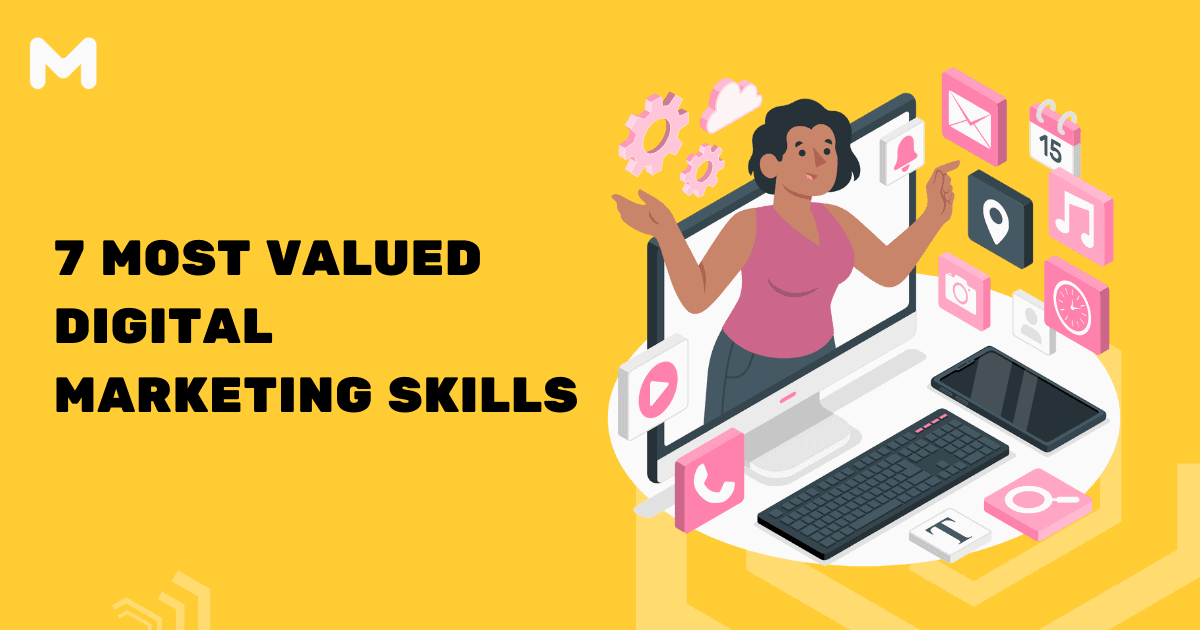When it comes to digital marketing, there’s no shortage of options. From content creation to advertising, here’s a look at the seven most valued digital marketing skills and how they can help your business succeed. These skills are in high demand and can help you stand out from the competition. If you’re looking to move up in your career or switch industries, these are some of the most valuable skills to have on your resume. The world of digital marketing is always changing, which means that there are always new skills to learn in order to stay competitive.
1) Search Engine Optimization (SEO)
Search Engine Optimization (SEO) is the practice of improving the visibility of a website or a web page in search engine results pages (SERPs). It’s one of the most valuable skills to have, but it can be difficult to master.
“As an entrepreneur and digital marketing professional, you’ll need to know how search engines work in order for your business’ website content to rank well on Google, Bing, Yahoo and other major sites. But if you’re just starting out as an entrepreneur or digital marketer who wants their own company name on the first page of SERPs without spending thousands on paid advertisements – then SEO is for you!” says Helen Ferris, Founder at Imaginemaids.
2) Content Marketing
Content marketing is the process of creating and distributing valuable, relevant and consistent content to attract and retain a clearly defined audience – with the objective of driving profitable customer action.
Daniel Foley, Head of Content at SEO-Audits.io adds, “It can be used to build your brand, generate leads and drive sales. Content marketing is one of the most effective ways to connect with your customers online by providing them with what they want when they need it most.”
3) Video Marketing
“Video marketing is a great way to engage your audience. It can be used in many different ways, such as promoting your brand, products and services; educating customers about them; showing how products or services work. Video marketing is one of the most powerful tools you can use to build your brand, promote products and services, and generate leads. Video marketing works best when it’s entertaining, educational or inspiring,” says Alice Rowen Hall, Co-Founder at Rowen Homes.
4) Digital Advertising
Digital advertising is an effective way to reach your target audience. It involves placing ads on digital platforms like Facebook, Google Search, and Instagram. PPC stands for pay-per-click marketing and it allows you to bid on keywords related to your business in order to get more traffic from those ads.
According to Daniel Foley, Founder of Daniel Foley SEO Consultancy, “Social media advertising can be used to increase awareness of your brand or product through the promotion of its content on social media channels like Twitter, and Facebook, etc., influencer marketing allows you to connect with influential people who might share your message or promote your products/services depending upon their interest levels towards them (i.e., if they’re following a particular sport). Native advertising refers specifically to non-promotional sponsored posts/articles that don’t look like advertisements but still get shared by users.”
5) Social Media
Social media is a form of communication that involves the sharing of information (e.g., pictures, and videos) via social media platforms such as Twitter, Facebook, Instagram and YouTube. Social media marketing is the process of creating and distributing content for social networks for purposes such as brand awareness or product sales.
“Social media networks are used by businesses to promote their products and services to potential customers. This can be done in many ways including posting links to your website on Facebook or Twitter so people can follow them there; sharing images with other users on these sites; creating groups within these websites where you can discuss topics related to what you do – this way it feels more like a community than just another page on the Internet!” speaks Holly Cooper, Content Head at Unagi Scooters.
6) Email Marketing
“Email marketing is the best way to reach your customers. It can be used to sell products and services, collect customer data, and help you stay in touch with current and potential customers. Automated email campaigns are great because they allow you to send emails at any time of day or night without having to worry about managing multiple accounts or scheduling times when everyone will be available. You can also use automated emails for lead generation campaigns by using them as part of an opt-in form on your website or landing page so that visitors who visit your site are automatically added to one big list of subscribers who receive weekly updates from you via email (and hopefully buy from you, too),” mentions Andrew Cooper, Owner at Simply E-Liquid.
7) Conversion Rate Optimization (CRO)
Conversion rate optimization (CRO) is the process of improving the performance of a website or web-based application. CRO is the process of testing different elements of a website to see what works best. It’s also about measuring and improving your website’s performance, so users can get a better experience when they visit it.
“The goal of CRO is to increase conversions from visitors who are not yet ready to buy something from you but may be interested in something else instead. You need these people on board before they leave without converting into buyers because their time spent on your site could have been used elsewhere if they had gone somewhere else first!” adds Paul Somerville, Editor-in-Chief at Electric Scooter Guide.
The most valued digital marketing skills are those that drive customer interactions and analytics. They will also drive customer interactions and analytics.
With a strong understanding of how people interact with your brand, you can measure their behavior in order to improve the overall customer experience. This can mean anything from understanding what content performs well on social media platforms to measuring the effectiveness of your paid advertising campaigns.
In order to achieve this goal, it’s important for marketers to have an understanding of data-driven decision-making processes such as A/B testing and segmentation (which allows you to create targeted ad audiences). It also helps if you know how customers use technology like smartphones or wearables so you can make sure they’re seeing relevant ads at all times.
Conclusion
The digital marketing skills that have emerged as the most sought-after are those that drive customer interactions and analytics. These skills complement a company’s existing offerings, allowing for deeper engagement with customers, more effective marketing campaigns, and better ROI on investments. As technology continues to advance at an exponential rate, so does our ability to use it effectively in order to get ahead of our competition.

